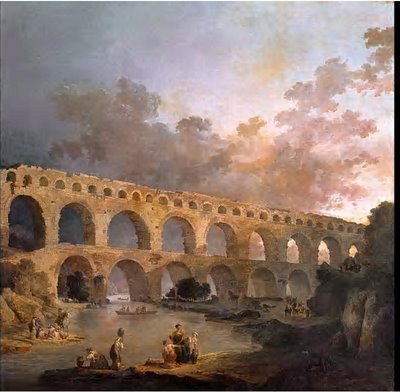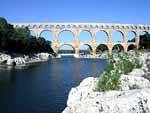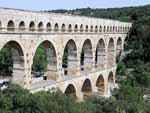The Pont du Gard

 The Pont du Gard, part of the famous Roman aqueduct remains, was built under the emperor Claude, around 50 AD. At this time, Nîmes (or Nemausus, its roman name) was an important provincial town and had been so for nearly a century. First, Caesar, then Augustus contributed to Nîmes development by endowing it with various city walls and monuments. However the fountain, which had certainly contributed to settlements from the sixth century B.C onwards, was no longer adequate for the town’s expan
The Pont du Gard, part of the famous Roman aqueduct remains, was built under the emperor Claude, around 50 AD. At this time, Nîmes (or Nemausus, its roman name) was an important provincial town and had been so for nearly a century. First, Caesar, then Augustus contributed to Nîmes development by endowing it with various city walls and monuments. However the fountain, which had certainly contributed to settlements from the sixth century B.C onwards, was no longer adequate for the town’s expan sion and its water needs. So the Nîmes authorities decided to create a water conveyance but they had to find a sufficiently plentiful source of water that would have both a regular flow and good quality water. The streams, rivers and waterways, including the river Gardon, were ruled out due to the irregularity of their flows. The source in Eure fulfilled the conditions. Therefore the Romans built the aqueduct from Uzès to Nîmes. The first leaks appeared as soon as water ran through the aqueduct and reducing the slope between Vers-Pont-du-Gard and Remoulins caused the reservoir to overflow. The height of the canal was raised for almost six kilometres and the bridge structures in this area were reinforced, except for the Pont du Gard’s. It seems that drinkable water was transported through the aqueduct until the first half of the third century A.D ensuing a period of illegal extractions for countryside irrigation.
sion and its water needs. So the Nîmes authorities decided to create a water conveyance but they had to find a sufficiently plentiful source of water that would have both a regular flow and good quality water. The streams, rivers and waterways, including the river Gardon, were ruled out due to the irregularity of their flows. The source in Eure fulfilled the conditions. Therefore the Romans built the aqueduct from Uzès to Nîmes. The first leaks appeared as soon as water ran through the aqueduct and reducing the slope between Vers-Pont-du-Gard and Remoulins caused the reservoir to overflow. The height of the canal was raised for almost six kilometres and the bridge structures in this area were reinforced, except for the Pont du Gard’s. It seems that drinkable water was transported through the aqueduct until the first half of the third century A.D ensuing a period of illegal extractions for countryside irrigation.* In 1914 the historical buildings and monuments legislation was set up and naturally included the Pont du Gard, and in 1986 the UNESCO classified it as world heritage.


0 Comments:
Post a Comment
<< Home